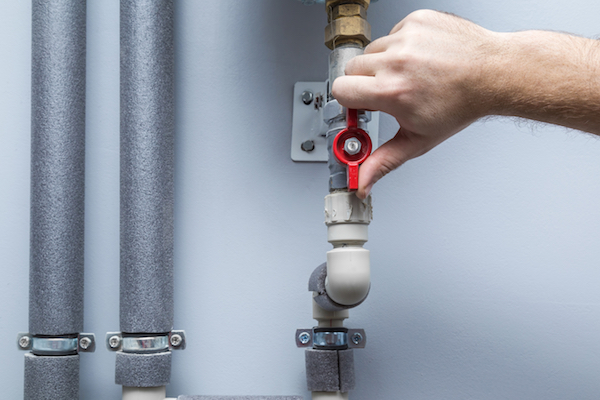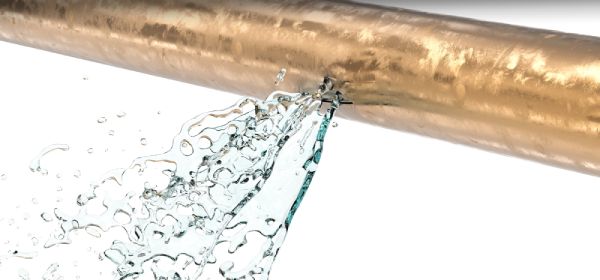We’re always impressed when homeowners have the confidence to do some jobs themselves and thanks to the internet there’s no shortage of places to find out how to tackle home repairs and improvements. But how many homeowners know what to do when things go badly wrong?
Gas, water and electricity
Sometimes a job that seems as simple as putting up a picture or nailing down the floorboards can lead to disaster. And often the most expensive and dangerous examples involve the live services supplying our homes: gas, water and electricity.
The reason for that is simple – unsightly pipes and wires are often hidden away under the floors or behind walls so they’re not always easy to spot.
Do you know the basics?
According to a survey, homeowners could be putting their lives in danger and risk causing thousands of euros worth of damage because they don’t know what action to take if they accidentally interfere with these live services.
Forewarned is forearmed, so we’ve compiled a helpful advice guide explaining where to find them and what to do.

Turning off the water
If you have accidentally broken a pipe, dripping water can quickly damage your floor, walls or possessions, so you need to stop the water flowing straight away. To do so, you’ll need to find your stopcock, a valve between two pipes that can be turned to stop the flow of water in your home.
External stopcocks
Homes typically have two stopcocks, inside the home and outside. The external one is usually found just in front of your house under a metal cover marked ‘água’.
Turning it will usually need a stopcock key – a metal T-shaped bar that can reach into the hole to turn the valve. Turning it will turn off water to the entire building – worth bearing in mind if you live in a block of apartments.
Internal stopcocks
Your home should also have a stopcock inside, that isolates the water in your property. It can be in a variety of places, often under the kitchen sink, bathroom, or in a cupboard under the stairs.
They can also crop up in odd places like cupboards, or even boxed in under the floorboards near the front door. If you’re not sure, try asking the previous owners or tenants, or the neighbours if their property is similar.
Turn and test
When you find it, turn it by hand or using pliers clockwise until the water stops coming out of the taps. You can use a lubricant like WD40 if it’s stiff to move, but be careful not to make it too slippery to turn. It’s a good idea to test it every few months to keep it operable.
Any plumber will need to know where your stopcock is so they can get to work.

Isolating the gas
Drilling into a gas pipe is thankfully a rare occurrence as most of the time they tend not to be in the places where we want to drill.
However, whether you suspect a leak or you’re tackling a job inside your home or outside at the front where gas enters the property, it is possible to disturb the gas supply – and when that happens, it’s crucial that you know what to do.
If you’re unlucky enough to have drilled into a gas pipe inside you will quickly notice the strong smell plus a noise similar to when you turn on the gas hob.
It’s at this point that knowing how to turn off the gas supply to your home is vital.
Where to find it
In newer houses, the isolation valve is normally outside next to the gas meter, housed in the same meter box or close by. If it’s not there, it could be under the stairs, beneath the kitchen sink or in the garage.
If you live in an apartment you should have your own secondary gas ECV (shut off valve) where the pipe enters the property and this should be clearly marked.
Often the valve will be within the plastic casing that houses the meter so make sure you have a meter box key for fast access.
As soon as you suspect that you have pierced a gas pipe you need to turn the handle of the isolation valve so the lever is at 90 degrees to the gas pipe to stop gas from entering the property. They should, in accordance with regulation, have yellow tape on the pipe indicating how to turn the valve off.
Call the hotline
The next thing to do is call the free 24 hour National Emergency number which is 112.
In the meantime, get everyone outside the property, don’t smoke or light matches, don’t turn electrical switches on or off and open the doors and windows to allow air to circulate.
The emergency advisor will dispatch emergency engineers whose priority is to keep you and your home safe by stopping the flow of gas; you will then need a Gas Safe registered engineer to repair the leak and test it before turning the gas back on.

Finding the fusebox
Just like a stopcock can control water coming into your home, your consumer unit or fuse box can control the electricity coming from the mains.
Like stopcocks, your consumer unit should be easily accessible, but they can be tucked away – sometimes in understairs cupboards, or in a cabinet near the front door.
A modern consumer unit will be fitted with Residual Current Devices (RCDs) and circuit breakers, that will trip or switch off in case of a fault, stopping the electricity flow to a particular circuit.
This is a safety feature to prevent accidents like power surges that can cause wiring to overheat, causing fires, and protecting devices that are plugged into your sockets.
Time for a replacement?
Older models will use fuses which contain a length of wire which melts when it overheats and needs rewiring – if so, this is a sign your unit is out of date and is due a replacement.
Consumer units will also have a main switch that controls all the power to your home, and can be turned off to stop the electricity entirely.
Electricians will need to access your consumer unit so they can work on your electrics safely, so it’s important that you know where it is.
Prevention is better than cure
If you are tackling home improvement work, then you’ll want to make sure you reduce the chances of disturbing your utilities as much as possible.
If you have architectural plans of your home, refer to them as they may give valuable insight into the location of wires and pipes.
If you don’t have plans, before carrying out any drilling, hammering or putting screws into a wall or floor check what’s behind it with a pipe, cable and stud detector If you are in any doubt, post your job for a vetted local tradesperson who will have a good understanding of where cables and pipes could be – plus they’ll also have professional tools that help them locate them.

